What ever happened to the 3D platformer?
With the much-hyped next generation of consoles – namely the PS4 and Xbox One – having arrived, and suddenly becoming current gen, it’s undeniable that the medium is in a state of transition. Many have already argued that these new consoles offer the smallest ever ‘leap’ in technology, at least in the way they will affect the type of games we play, but nobody knows what trends will emerge moving forwards. Of course, at launch things aren’t that promising, but they seldom are, with shelf space occupied by a slew of very familiar genres and franchises that would ultimately be almost the same if they were on last gen consoles (which many of them are) only missing that little graphical polish, that extra spit and shine.
It seems a good time to speculate, then, on what types of games and genres will be popular moving forward on these consoles, and which will be left by the wayside. This got me thinking about one genre in particular; a genre that practically birthed games into the third dimension, that was once so popular and central to interactive entertainment it was virtually synonymous with it, but a genre that in recent years has fallen out of favor with mainstream audiences. I am of course talking about the beloved and infamous 3D platformer.
So what ever happened to the 3D platformer? It’s something I’ve been thinking about a lot recently, and to talk about this properly we need to look back at the history of the genre, to see where it sits in the current landscape of videogames as a medium, and to ponder its future, however bright or bleak. To do this, there is only one place to start: the beginning.
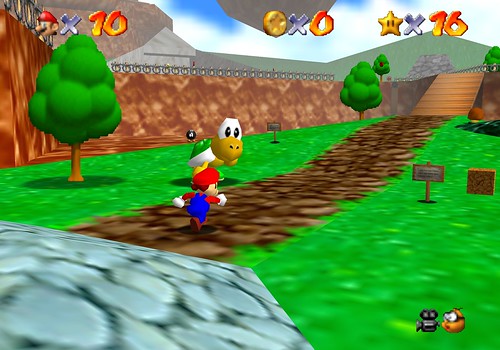
New Horizons (and a brand new dimension!)
It’s the mid 1990s and Mario has waged war with Sonic for years as they each hop, bop and sprint from the left to the right of many living room screens and many children’s imaginations. But a new generation of consoles is incoming: the futuristic, disc playing PlayStation, and the less futuristic, but graphically superior Nintendo 64.
These new machines were arguably (and perhaps always will be) the biggest leap in technology from one console generation to the next; the move from flat, pixelated levels, to full 3D worlds is a jump that no amount of graphical horsepower can match. There were of course 3D games well before these consoles and arguable examples of the 3D platformer too, but there was no established paradigm in how to reimagine a beloved 2D series from the 8 and 16 bit eras into the realm of 3D. That is, until Nintendo managed to do the impossible and reinvented their most popular and important franchise, Super Mario, into the third dimension absolutely flawlessly on their very first attempt. The game was Super Mario 64 and it not only birthed a new genre, but set the gold standard for it.
Beforehand the platformer – including the Mario games – had been a simple affair: to get to the end of a linear 2D level without dying. Super Mario 64 took the character, charm and joyous jumping mechanics of the series and set them in a staggering, non-linear open world. For the time, the ambition here was simply unprecedented, but the fact that Nintendo managed to come through on their vision so masterfully meant that they had single handedly created the design document that many others would follow in the years to come. Because Super Mario 64 was such an achievement, the entire industry was enamoured with the idea of the new genre, and so the 3D platformer was the new hottest thing in games.
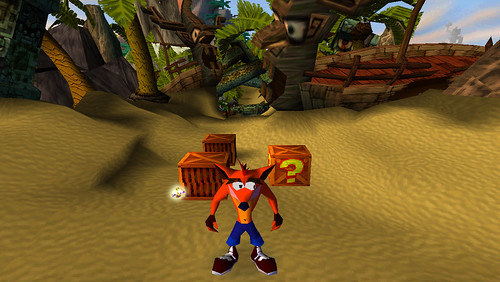
On the PlayStation side of things, Sony was cooking up a 3D platformer of their own, which launched just a matter of months after Mario’s 3D debut. This was of course our introduction to Crash Bandicoot, and perhaps the birth of the ‘mascot era’ – a time when anthropomorphic animals with attitude were utterly inescapable. Crash Bandicoot himself was a likable marsupial, following Sonic’s 90’s cool kid vibe, designed to feel more current and appeal to the widest demographic possible. However, unlike Super Mario 64, Crash Bandicoot was a more literal translation of the 2D platformer mapped onto the third dimension. Whereas Mario’s new levels and worlds were more freewheeling and explorative, Crash’s levels were linear, reaction based gauntlets where getting to the end of a stage alive was still the order of the day. Crash Bandicoot was popular and spawned many sequels and spinoffs, but it was Super Mario 64’s blueprints that were duplicated and built on time and time again.
It’s important to remember that these were system-selling games – as popular and ubiquitous as the FPS is today – and the reason for the many copycats to come, and the many, many mascot characters that would soon inundate the medium. Everybody wanted a piece of the pie.
A Golden Age for the 3D Platformer
And so every other game released for the next few years was, you guessed it, a 3D platformer. And no developer was held in as high esteem as Nintendo’s then second mate, Rare (née Rareware). The company previously famous for the gorgeous Donkey Kong Country trilogy on the SNES, subsequently released a 3D platformer called Banjo Kazooie that simply could not have existed without Super Mario 64.
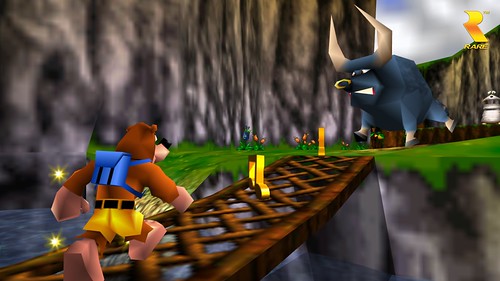
Many argue, myself included, that Banjo Kazooie is possibly a better game than Super Mario 64, but it follows its lead to a fault. Multifaceted, open world hub area, check. Individual levels with challenges and collectables needed to progress, check. Non-linear stages comprised of jumping and stomping in a colorful, charming 3D world, check. But even if Rare was acting as a Nintendo cover band here, Banjo displayed smart designs and a deeper, richer world that showed they might be outperforming their inspiration. Take Click Clock Woods, one of the final levels in Banjo Kazooie, for example. The level can be entered in any of the four seasons – which in itself was visually stunning and unique – but events that happened in summer affected those in fall, and so on. This might not seem that impressive now, but at the time it was a revelation.
Rare continued to push the genre forward throughout the lifespan of the Nintendo 64, with Donkey Kong 64, a Banjo sequel and finishing the generation off with the controversial Conker’s Bad Fur Day, a game that Nintendo refused to publish, letting the now defunct THQ pick up the slack. Conker looked like the kind of bright and cheery mascot platformer we were used to from Rare, starring a hoodie wearing red squirrel, but the game was actually a crude, rude, toilet humour filled parody of popular movies of the day, including The Matrix and Alien, and subverted many tropes of the genre, messing with the player’s expectations. This was the first sign of developers of platform games being aware of the tonal shift in videogames to a more serious and mature mise en scène.
There were many other platformers during the N64/PS1 years, including 1998’s Spyro the Dragon which spawned two sequels, and the cult classic second installment in the Rayman series, Rayman 2: The Great Escape (more on him later). But before long it was time for a new era in games, and this was ushered in through the sleek and mighty, PlayStation 2.
Sony’s Holy Trinity of Platformers
Even though the dawn of the fifth generation of home consoles brought in a wave of more serious and gritty, cinematic games such as Metal Gear Solid 2: Sons of Liberty, Splinter Cell and Halo, there was still room for 3D platformers to take centre stage in the industry, at least for a while, and no characters or games represent this better than Sony’s trio of cartoon capers, Ratchet and Clank, Jak and Daxter, and Sly Cooper.

Ratchet and Clank and Jak and Daxter are particularly interesting here, because they were made by the developers of Spyro and Crash respectively, Insomniac and Naughty Dog. Despite having successful mascot franchises already (that moved consoles no less), they turned their attention to new characters and ideas, and it was arguably Insomniac that understood where gamers where going before the others did.
You see, Ratchet and Clank was still a platformer, but it had a heavier emphasis on story and writing, was set in a sci-fi world, and included an arsenal of guns. Yes, guns in a platformer! At the time this was completely new, and was almost a blending of different genres to create the action platformer. Jak and Daxter on the other hand, was a beautiful, charming collectathon, but hadn’t really ventured too far from the likes of Super Mario 64 and Banjo Kazooie. Its sequel however, Jak II: Renegade, is possibly one of the biggest U-turns of any franchise in gaming history. Seeing the success of Ratchet and borrowing the mission structure of GTA III, Naughty Dog gave their silent protagonist an edgy voice, a rad beard, a teen-angst dark side, and most importantly, a gun. Or maybe lots of guns.
It turned out that Naughty Dog understood their audience, though – or more accurately, the trends of the time – as Jak II was a great success, but looking back on it now it’s easy to see that the original was the much purer game and that Jak II simply doesn’t hold up.
The third of Sony’s new mascots was none other than Sly Cooper himself. Developed by Sucker Punch, now better known for the inFamous series, Sly was the least popular of the trio, but quite possibly my favorite. In my opinion, the Sly games are wittier and funnier than their counterparts and their characters more likable, but it’s the element of stealth that makes them stand out. The first game was a harder, more old-school platformer, where it was best to avoid enemies and stay out of the wandering gaze of search beams, but the sequels were a little more forgiving and let you play as sidekicks Bentley and Murray, amongst others. These games focused on multi-tiered missions with each character having a part to play in order for them to be a success, which were a precursor of sorts to Michael, Trevor and Franklin’s heists in GTA V.
However, the fact that Sly was the least successful of the three – and after Jak’s change of heart – was the only one without guns, showed the waning interest in traditional 3D platformers from mainstream gamers at the time. There were several other ‘me too’ platformers during this generation of consoles, including Ty the Tasmanian Tiger and Tak and the Power of Juju, but the less said about them the better. Even the likes of Super Mario Sunshine and Rayman 3 saw diminishing interest compared to their forebears. Soon the industry became bloated with lackluster examples of the genre, which in turn spawned a dirge of halfhearted racing spin offs. It seemed 3D platformers were beginning their descent into obscurity. There was still occasional life in the genre, most notable at this point in hybrid, platform adventure game Beyond Good and Evil, and the wildly imaginative Psychonauts. But both of these games sold poorly; it was clear the industry was moving on to bigger and brighter things.
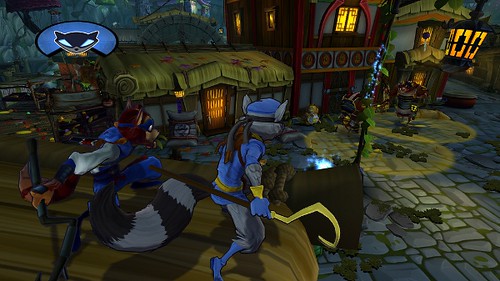
New Challengers Approaching: Wii, Xbox 360 and PS3
With yet another set of consoles arriving, the emphasis on storytelling, realism and cinematic experiences was amplified. Naughty Dog were expected to create another new platforming series, but surprised everyone with the videogame equivalent of Indiana Jones in the Uncharted games. Sly disappeared, at least until a sequel finally showed up just this year, developed by understudy Sanzaru Games. Not many people paid it any attention, though – even with its budget price tag – which really shows how far the 3D platformer has fallen from grace. Only Ratchet and Clank and Mario have continued to pave the way for big 3D platformers, but the core Ratchet titles on PS3 have been well received commercially and critically, and the Super Mario Galaxy games are considered some of the best of the generation, so there is still hope yet.
However, 3D platformers really have been few and far between in this last generation, and one of the primary reasons that I think this is – despite the industry’s disillusionment with the genre – is due to the rise and success of the indie scene, and in turn the 2D platformer.
In recent years it has been increasingly easy for independent developers to get their hands on the tools and knowledge to make and publish games themselves. Due to the often small teams and lack of big budgets, there was a rise in 2D side-scrollers from indie developers, especially platformers, including Braid, Super Meat Boy, Limbo and Fez, just to name a few of the bigger ones. And once the larger publishers had caught wind of the hunger for these types of games again – beforehand the industry had almost dropped 2D games completely – there was an influx of big budget 2D platformers as well.
There were a slew of them from Nintendo themselves, rushing to reintroduce themselves and their old franchises as the pinnacle of the genre, including New Super Mario Bros Wii, Donkey Kong Country Returns, Wario Land: Shake It! and Kirby’s Epic Yarn. But the character that most surprisingly reappeared in a 2D platformer – and a very good one at that – was Michel Ancel’s Rayman.

Having originally appeared in a mediocre 2D platformer in the 1990s, Rayman had moved on to the aforementioned Rayman 2, a unique and brilliant 3D platformer, before being farmed out to another team for the uninspired Rayman 3, while Ancel worked on pet project Beyond Good and Evil. Rayman survived after this, but only as a shadow of his former self, hosting the Raving Rabbids games, which eventually dropped him too, the brand seemingly stronger without the aging, limbless mascot. So it was a real surprise when Rayman Origins appeared and was, well, brilliant. Sporting gorgeous hand painted 2D visuals made possible by the Ubi Art engine, and borrowing New Super Mario Bros Wii’s four-player co-op, the game was a surprise hit. It’s sequel, Rayman Legends, recently landed and was even better.
The recent Puppeteer was another interesting and unique take on the 2D side-scroller from Sony’s Japan Studio. Each of the game’s levels is presented as a set on a stage of a theatre production, and the game takes a multi-tiered visual approach borrowing from the likes of Punch and Judy, Tim Burton and Studio Ghibli. The game’s two newest ideas were the protagonist’s head-swapping ability – a little like Kirby’s ability to swallow enemies and borrow their tricks – and the scissor mechanic, whereby the main character can chop through the scenery as a way of traversing the levels and attacking bad guys.
However, just like the recent Sly Cooper: Thieves in Time, Puppeteer was released as a budget title and yet still didn’t manage to set the sales charts on fire. It seems that even the 2D platformer is not as powerful as it has been in recent years, and proves that gamers’ likes and dislikes can be rather fickle.
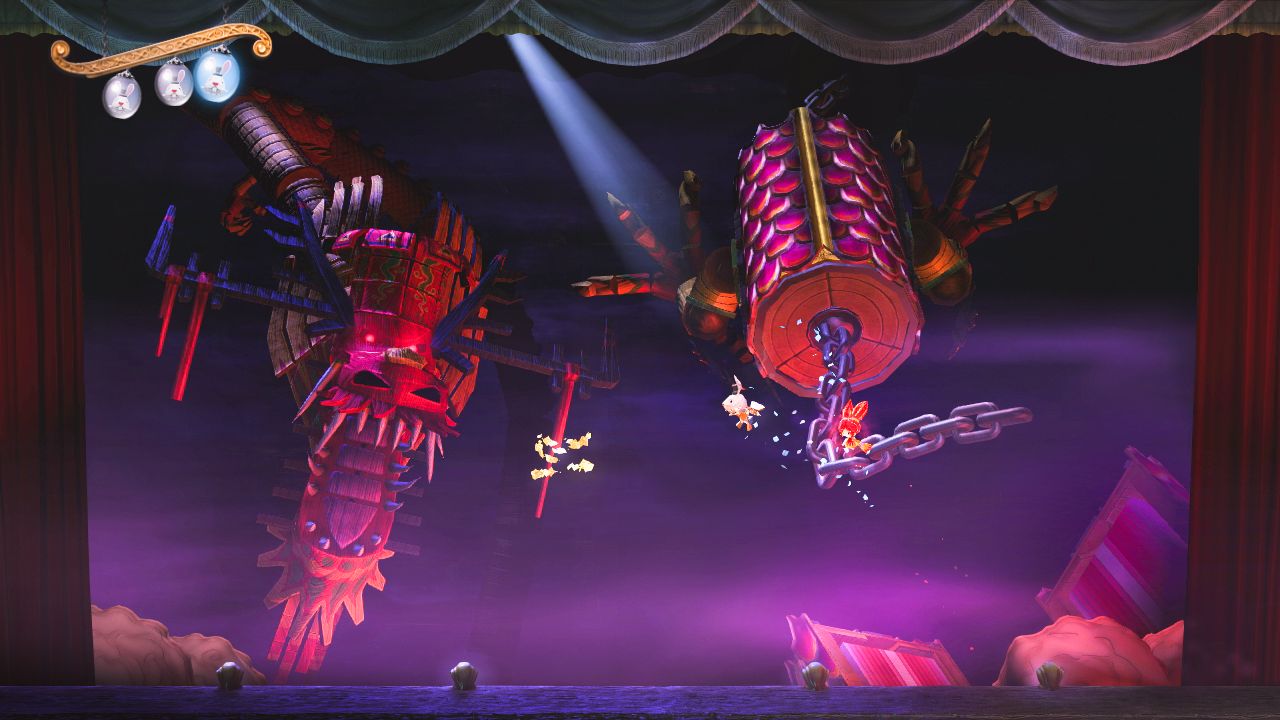
There was one last attempt by Sony this generation in regards to the 3D platformer, though, and that came in the form of HD compilations of their three famous mascots. Some see these sort of HD remasters as a quick cash in on nostalgia, but they were also used to reacquaint audiences with those franchises before releasing new titles in their respective series (as seen with Sly) and to let people who perhaps missed out on them the first time around to see what all the fuss was about. Even though these collections were quite cheap and allowed us to replay old favourites in HD, each of the Ratchet and Clank, Jak and Daxter and Sly collections have all sold under a million units worldwide as of November 2013, which arguably could be the final nail in the coffin regarding publishers’ faith in the genre.
Next Gen! (Or Now Gen)
So, with the recent release of the PlayStation 4 and the Xbox One, what chance does the 3D platformer have of being a meaningful part of mainstream videogame conversation once more? Knack seemed to be the bastion of hope when first shown off by Mark Cerny during the PS4 reveal – not only for the genre, but for games of childlike wonder and whimsy in general. But since then it has received rather lackluster reviews and was ultimately a slightly patronizing, linear brawler, compared to an open, explorable platformer.
However, many of the biggest series today, such as the Assassin’s Creed games, show some aspects of lineage from the 3D platformer, including exploration and collectables, whereas other games like the first person parkour Mirror’s Edge take the momentum and reflex jumping skills of platformers and use them in new ways. Perhaps that’s what’s to become of the 3D platformer, for its best bits to be cannibalized into other genres. Even the whimsical cartoon mascots have moved on to the likes of the mobile scene with Angry Birds merchandise flying of the shelves all around the world.

Back on consoles, though, Ratchet did recently have a return to form with Into the Nexus (after a few failed spin offs), but that was released on PS3, was half the size of the normal games – billed as an epilogue to the PS3 trilogy – and was ultimately lost under next-gen hype. It seems, then, that the current savior of the genre is on the Wii U – a console that many argue isn’t even ‘next-gen’. I am of course referring to Nintendo’s Super Mario 3D World, the first 3D platformer the Kyoto giant has ever released in HD. The game is visually arresting as well as an absolute blast to play, and it reads as a ‘best of’ of the entire Mario series, reveling in its simultaneous use of nostalgia and innovation.
Although, even with a brilliant Mario title, it’s still the same old Mario we know and love. It seems – that at least at the moment – there is little hope for 3D platformers with new characters and worlds to look forward to on the newest consoles, and that’s a real shame. Growing up, 3D platformers were my favourite genre and I think they represent an important part of videogame’s repertoire, something that no other genre can replace, a genre that I think is important for kids to play and learn the tropes of the medium with. I think it’s more than likely that we’ll see another 3D Mario and Ratchet before long, maybe even another Sly, but what the genre and the industry really needs is something completely new to inject a sense of life and excitement, and sadly, that’s something I don’t see happening soon.
